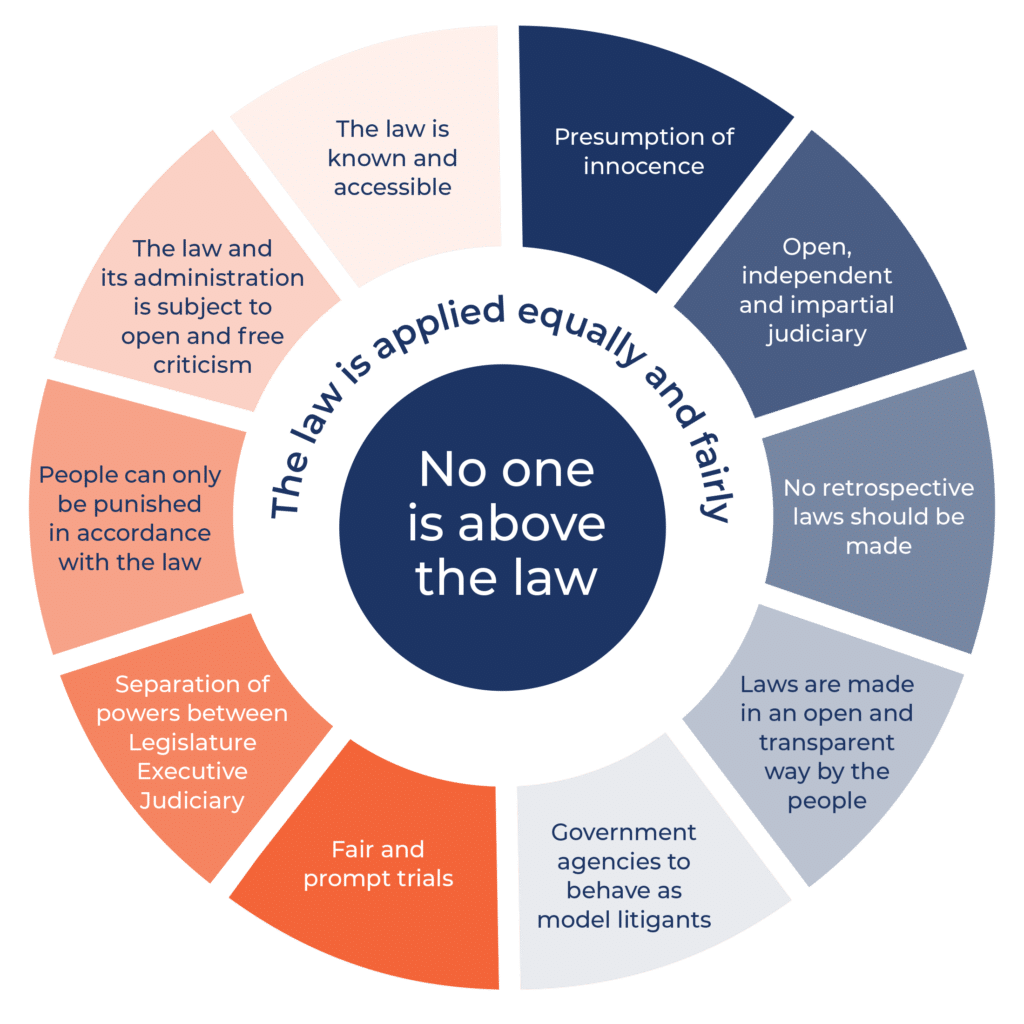This case note is about
- Smith v The Queen [2015] HCA 27
- Procedural Fairness and the Facts of The Case
- Trial Judge’s Directions to a Jury and Majority Verdicts in Queensland
- Right to a Fair Trial
- Jury Decision Making and Interim Votes
Procedural fairness is a central principle of the rule of law that struck at the heart of the High Court case Smith v The Queen [2015] HCA 27. The right to a fair trial was considered in the context of jury voting, in particular the trial judge’s non-disclosure of a jury’s interim voting patterns to counsel. The High Court considered whether the failure of the trial judge to inform the prosecution and defence counsel of the jury’s interim votes amounted to a denial of procedural fairness.
The facts
The appellant was criminally tried in the District Court of QLD for one count of rape. Some time after retiring, the jury informed the trial judge of its inability to reach a verdict. The jury was asked to continue deliberations. After further discussion and clarifying some legal issues, such as the meaning of “beyond reasonable doubt”, the jury still could not reach a unanimous verdict. It informed the judge of this by way of a note, which also detailed the jury’s interim votes and voting patterns. Upon reading this, the trial judge told counsel that the jury had not reached a consensus, and that he did not intend to publish the jury’s interim voting patterns further than saying they were not in total agreement. The lawyers made no objections at the time.
After the jury had been deliberating for eight hours the trial judge told counsel of his intention to question the jury on whether they thought they would be able to reach a majority verdict. The Jury Act 1995 (QLD) (“the Jury Act”) permits a trial judge to ask a jury to reach a majority verdict (that is, a minimum of 11 out of 12 jurors) if, after eight hours, the judge is satisfied that the jury is unlikely to reach a unanimous verdict (s59A (2); s59A (6) of The Jury Act). The jury agreed to this. Neither counsel made any application for the jury to be discharged at the time.
The Jury Act says that a person must not publish to the public “jury information”
“information about statements made, opinions expressed, arguments advanced, or votes cast, in the course of a jury’s deliberations” .
An exception to the rule allows information to
“be sought by, and disclosed to, the court to the extent necessary for the proper performance of the jury’s functions”
The appellant was found guilty by a majority of 11:1. The appellant alleged that the trial judge should have disclosed the jury’s precise interim voting patterns.
Mr Smith appealed the conviction to the High Court, he submitted that he was denied a fair trial in accordance with law because the interim voting patterns were withheld from counsel.
The High Court unanimously dismissed the appeal. In finding there had not been a denial of procedural fairness, the Court considered, among other issues:
- Whether disclosure of the jury’s interim votes and voting patterns were necessary for the proper performance of the jury’s functions (i.e. necessary for determining whether guilt was established beyond reasonable doubt);
- Whether the appellant had a fair trial according to law after the point at which the jury retired to consider its verdict;
- Whether the jury’s interim votes were relevant to the issue before the court;
- What capacity such disclosure would have to influence the trial judge’s exercise of discretion to dismiss the jury or allow a majority verdict.
“A fair trial in accordance with law”
What constitutes a “fair trial” ? While there is no exhaustive list of the attributes of a fair trial, it is generally accepted that:
- Information that is relevant to issues before the court must be disclosed to lawyers for the prosecution and defence.
- Both the prosecution and defence should be given the opportunity to respond to matters that are against (prejudicial) their interests. This includes the opportunity to make submissions on relevant issues that could effect the future conduct of the trial.
Justice Gordon’s leading judgement noted that the interim voting patterns of the jury were not relevant to the future conduct of the trial. Rather, what was relevant to the future conduct of the trial “were the jury speaker’s answers, given in open court, to the trial judge’s direct questions about whether allowing a majority verdict might resolve the situation [of a deadlock] and whether the jury wanted more time to consider its verdict” [6]. The trial judge was not obliged to disclose to counsel the precise contents of the jury’s note before determining whether to permit a majority verdict. The extent of the numerical split of the jury tells the judge no more than that, at some point in its deliberations, the jury was not in unanimous agreement and “adds nothing to the knowledge that the jury is deadlocked or has not yet reached a verdict” [52]. The trial judge knew that the jury was deadlocked; his conduct was not dependent on, or affected by, what had been disclosed in the jury’s note.
Confidentiality of interim votes
The High Court’s emphasis on non-disclosure of interim votes is premised on the idea that jury deliberations should remain confidential. This is a principle of the highest significance in the criminal justice system. It maintains confidence in the jury process and protects the finality of the verdict. Further, it facilitates frank and open discussion among jurors, knowing that what is said in the jury room remains in that room. As Gordon J expressed, the process of reaching a verdict “is fluid, not static” [33]. The “changeable character of the jury’s deliberations” means that until the final verdict, each juror is entitled to change their mind [52]. The true complexity and nature of the division of the jury’s reasoning is not captured only by voting figures, since individual jurors do not necessarily reach a particular conclusion by the same route. If given too much weight, these figures lead to a type of “second-guessing” of the jury’s deliberations.
The trial judge rightly disregarded the jury’s interim voting patterns, reiterating that: “your voting is a matter for yourself”.
The High Court upheld the precedent that jurors should not reveal their votes or voting patterns when conveying to a trial judge that they are having difficulty in reaching a verdict. Judges should give directions to juries indicating such to ensure the trial is seen to be conducted in accordance with principles of procedural fairness and the rule of law.
Comprehension Questions
1. What did the High Court consider in the case of Smith v The Queen [2015] HCA 27?
2. What constitutes a ‘fair trial’ according to law?
3. What did the High Court decide?
About the Author
Louisa Spiteri writes for The Institute as part of our Blog Intern program run in partnership with the International Law Committee of the NSW Young Lawyers of The Law Society of New South Wales. She is a solicitor whose legal experience spans across the Legal Advisory Section of the International Criminal Court, the Public Defenders Chambers, the Australian Human Rights Centre, an award-winning humanitarian firm, and legal research work for esteemed academics. Louisa undertook her Bachelors of International Studies combined with Law at the University of NSW. She has a passion for government accountability, the rule of law, human rights and international law.




